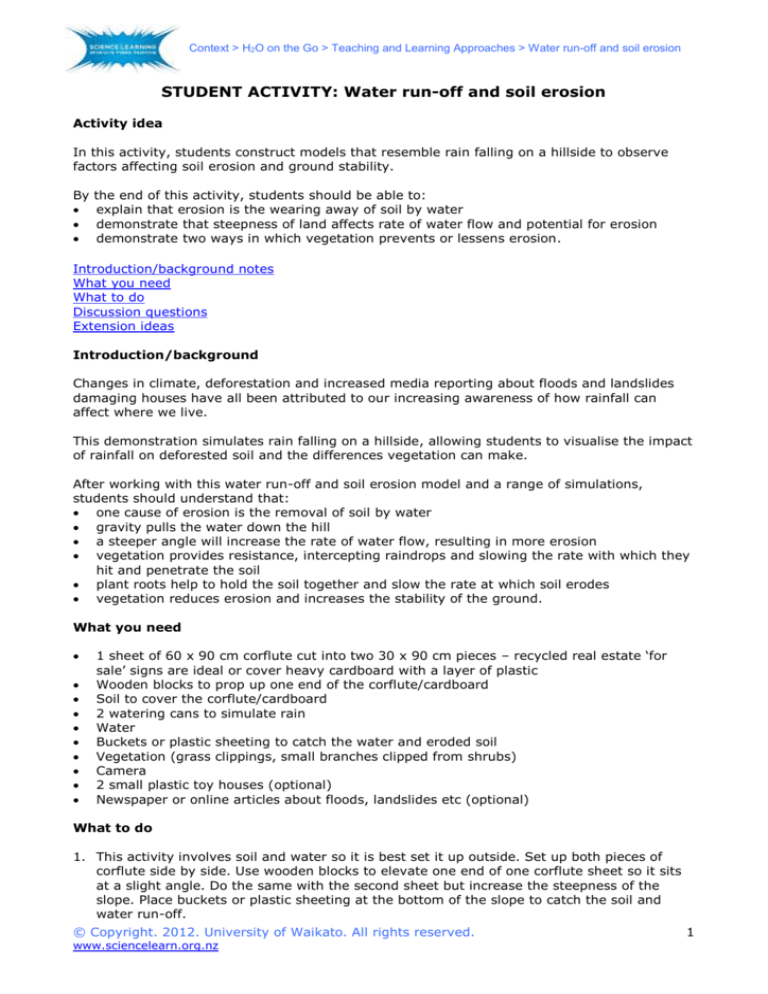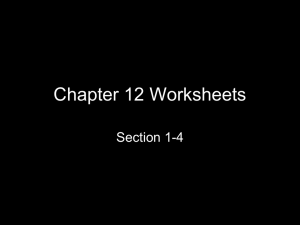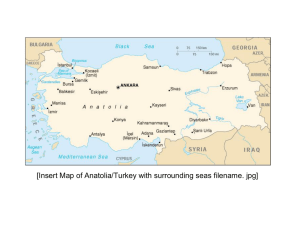
Context > H2O on the Go > Teaching and Learning Approaches > Water run-off and soil erosion
STUDENT ACTIVITY: Water run-off and soil erosion
Activity idea
In this activity, students construct models that resemble rain falling on a hillside to observe
factors affecting soil erosion and ground stability.
By
the end of this activity, students should be able to:
explain that erosion is the wearing away of soil by water
demonstrate that steepness of land affects rate of water flow and potential for erosion
demonstrate two ways in which vegetation prevents or lessens erosion.
Introduction/background notes
What you need
What to do
Discussion questions
Extension ideas
Introduction/background
Changes in climate, deforestation and increased media reporting about floods and landslides
damaging houses have all been attributed to our increasing awareness of how rainfall can
affect where we live.
This demonstration simulates rain falling on a hillside, allowing students to visualise the impact
of rainfall on deforested soil and the differences vegetation can make.
After working with this water run-off and soil erosion model and a range of simulations,
students should understand that:
one cause of erosion is the removal of soil by water
gravity pulls the water down the hill
a steeper angle will increase the rate of water flow, resulting in more erosion
vegetation provides resistance, intercepting raindrops and slowing the rate with which they
hit and penetrate the soil
plant roots help to hold the soil together and slow the rate at which soil erodes
vegetation reduces erosion and increases the stability of the ground.
What you need
1 sheet of 60 x 90 cm corflute cut into two 30 x 90 cm pieces – recycled real estate ‘for
sale’ signs are ideal or cover heavy cardboard with a layer of plastic
Wooden blocks to prop up one end of the corflute/cardboard
Soil to cover the corflute/cardboard
2 watering cans to simulate rain
Water
Buckets or plastic sheeting to catch the water and eroded soil
Vegetation (grass clippings, small branches clipped from shrubs)
Camera
2 small plastic toy houses (optional)
Newspaper or online articles about floods, landslides etc (optional)
What to do
1. This activity involves soil and water so it is best set it up outside. Set up both pieces of
corflute side by side. Use wooden blocks to elevate one end of one corflute sheet so it sits
at a slight angle. Do the same with the second sheet but increase the steepness of the
slope. Place buckets or plastic sheeting at the bottom of the slope to catch the soil and
water run-off.
© Copyright. 2012. University of Waikato. All rights reserved.
www.sciencelearn.org.nz
1
Context > H2O on the Go > Teaching and Learning Approaches > Water run-off and soil erosion
2. Cover both sheets with a layer of soil about 1 cm deep.
3. Explain that the models represent hillsides. If possible, link the models to hills or slopes
within the local landscape so students can make connections between the models and real
life.
4. Ask students to observe the set-up, paying careful attention to the amount and distribution
of the soil and the steepness of the hillsides. Use a digital camera, video or similar to
record the scene.
5. Using the watering cans, start sprinkling water on both models, allowing the rain to wash
away some soil. Try and pour as consistently as possible up and down the slopes. Stop
when some but not all of the soil has washed away.
6. Record the results. Discuss what processes are acting upon the soil (gravity and erosion).
Does having a steeper slope make a difference?
7. Brush the materials from the corflute to begin a second simulation.
8. Set up the corflute sheets side by side. Use wooden blocks to place both sheets on the
same angle, forming identical hills. Place an equal layer of soil on each model.
9. Leave one model with bare soil to represent deforestation. Cover the soil in the second
model with a layer of grass clippings and make a small forest by planting trees (small
shrub branches) at the higher part of the slope.
10. Ask students to carefully observe the set-up, noting the differences. Use the digital camera
to record the scene.
11. Using the watering cans, sprinkle water on both models. Stop when some but not all of the
soil has been washed away.
12. Record the results. Discuss the difference vegetation or the lack of it made to each model.
13. (Optional) Set the models up again, this time using the toy houses. Ask students to place
the houses where they think are the safest and most vulnerable places for a house. Add or
remove vegetation as desired. Sprinkle the models with water to test their theories.
Discussion questions
How does rainfall increase the likelihood of erosion?
What difference does the steepness of a slope make to the rate of water flow and erosion?
How does vegetation help to prevent soil erosion?
What are some potential effects when vegetation is removed either through deforestation
or forest fire?
Extension ideas
Show the class photos of houses in different settings – steep hillsides, flat land, heavily
vegetated areas, denuded areas. Ask the students which houses they would like to live in
and which they wouldn’t. Why do they have these preferences – why might they not want
to live on a steep cliff? After completing this activity, would they still chose to live in the
same houses? Can they apply what they have learned to assess the suitability of home
settings?
Experiment with planting some plants or seeds and allowing them to grow for a while in the
soil on top of the corflute. Use this model to show how roots can hold on to soil and
prevent erosion.
© Copyright. 2012. University of Waikato. All rights reserved.
www.sciencelearn.org.nz
2
Context > H2O on the Go > Teaching and Learning Approaches > Water run-off and soil erosion
Experiment with different intensities of rainfall. Set up identical hillside models with
identical amounts of rainwater but use different watering systems when simulating rain.
Use a watering can with larger holes to simulate a heavier rainfall event on one model
while having a gentler shower on the other model.
Experiment with the amount of water that falls on the models. Set up identical models but
sprinkle twice as much rain on one.
View the photos/video from the various simulations and discuss how and why the
differences occurred.
© Copyright. 2012. University of Waikato. All rights reserved.
www.sciencelearn.org.nz
3









